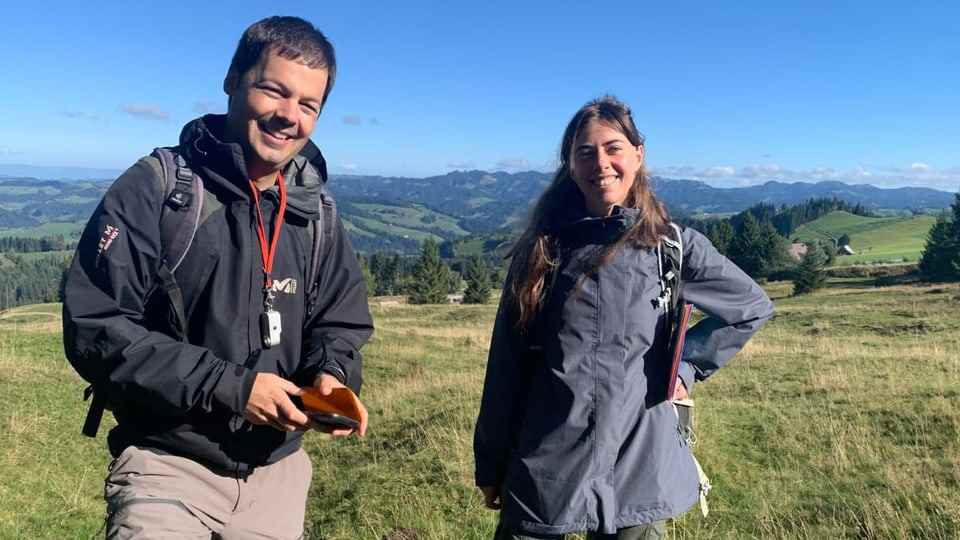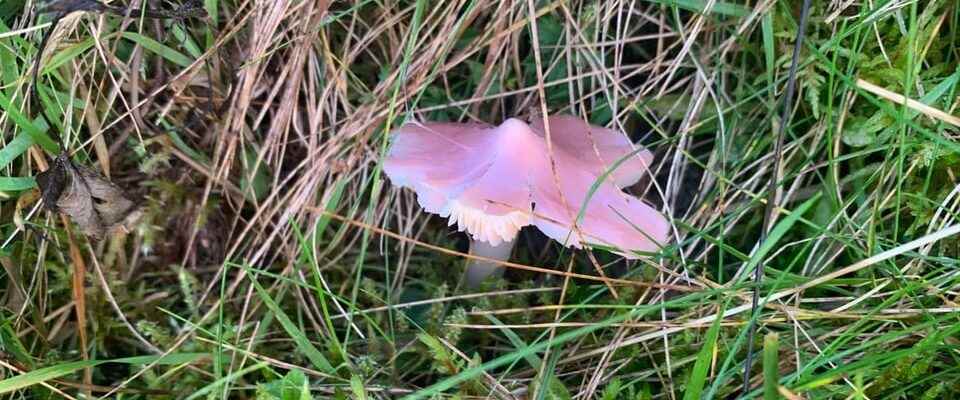contents
The rose red sapling is an important indicator. An entire ecosystem is connected to it. A researcher looking for mushrooms explains.
Ober Buhus, above Trubschachen in the Emmental: Andrin Gross walks slowly across the pasture with his research colleague. He is head of Swissfungi, the data and information center for Swiss mushrooms. It is affiliated with the Federal Research Institute for Forest, Snow and Landscape.
They search the ground of the pasture with their eyes – all of a sudden he’s there, the rose-colored sapling: “So cool. She found him.” What is special about this mushroom is just its appearance, says Gross: “It is rose-red and has a pointed cone. A unique species of mushroom. Unmistakable.»
Legend:
Unique in its appearance: the rose-red sapling. He needs meager meadows. He does not tolerate fertilizer.
SRF
The fungus is considered to be in danger of extinction in Switzerland. It is one of twelve species of mushrooms in Switzerland that are protected. That is why Andrin Gross and his team are developing an action plan for the rose-colored sapling in the canton of Bern.
Because this fungus is an important indicator: “It’s an umbrella species. When this fungus occurs, you know that there are other saplings, other fungi worthy of protection, in that meadow. So it makes sense to focus on this mushroom. Because it shows a bit of the quality of a meadow for the mushrooms.»
Connected species and ecosystems
According to Andrin Gross, an entire ecosystem is linked to the fungus: “In the ecosystems, the individual species are closely linked. Not just inside the mushrooms. Fungi are associated with plants. Plants, in turn, are eaten by mammals. Then they make a cowpat. Then come specific insects. If we disrupt these ecosystems too much, they may falter and eventually collapse.”

Legend:
Andrin Gross and his colleague Margaux Leisi are committed to biodiversity.
SRF
So it’s about the diversity within the species and the diversity of the ecosystems. If a species such as the rosy sapling disappears, it is not always a problem, explains Daniela Pauli, head of the Biodiversity Forum at the Academy of Sciences.
«Tipping points in the ecosystem»
You have to think of the whole thing as a network. A net that gets more holes with each species that disappears: “This net will last for a long time. This means that the ecosystems continue to function. They can do their job.”
Pollination is still possible. Water purification, climate regulation, and slope stabilization all worked to a certain extent. “It all works for a relatively long time. But at some point these holes in the network get so big that it just doesn’t work anymore. We then talk about tipping points in the ecosystem.”
Biodiversity is not particularly great where it is particularly green, on the contrary: “Where it is a little less fertilized, brownish, less tidy. If you see some open ground. Biodiversity is where it looks a little more unkempt.”
As humans, we can’t really assess exactly what the mushrooms bring us.
Andrin Gross also found the rose-colored sapling in such a meadow. He looks at it and says maybe we humans don’t even know what this fungus does.
“You don’t know exactly what’s going to get lost. As humans, we can’t really assess exactly what the mushrooms bring us. That’s why it would be negligent if we didn’t care and didn’t protect the mushrooms,” says Gross. It is therefore important to work for biodiversity and thus also to take care of the rose-colored sapling.
